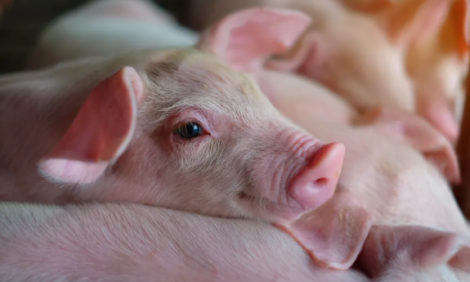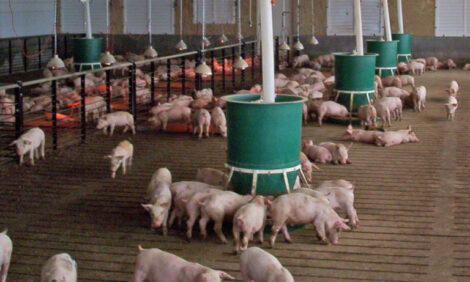



US Breeding Herd Flattens Out (Apr 07)
By Chris Harris, Senior Editor, ThePigSite. Our snapshot of the ongoing global pig industry trends as reported in April 2007 Whole Hog Brief. To read the full detailed analysis including all the commentary and graphical data, subscribe to the publication.The US breeding herd showed a drop in numbers of two per cent on the last quarter according to the March 2007 Hogs and Pigs Report from the USDA, the Whole Hog reports.
With the herd standing at 6.081 million it was still one per cent up on the same time last year.
The Market hog inventory was 55 million head also one per cent higher than the same period last year.
The Whole Hog said that scare stories about spiralling feed costs are making US hog producers rein in on the modest expansion that has been seen over the last few years.
The Food and Agricultural Policy Research Institute based in the University of Iowa shows that the pork trade has benefited from food scares such as BSE and avian influenza over the last four years.
However the Whole Hog reports that with lower exports from Brazil and weak imports into Japan and South Korea, the pork trade declined by 0.4 per cent in 2006.
It is expected that there will be stricter enforcement of tariff rules and a recovery from BSE and AI influencing the pork trade in coming years.
The Whole Hog's review of the global pig price cycle shows modest gains. The current upswing began in June last year, but it has shown none of the accelerating growth previously seen in 1999 and 2003.
The Whole Hog reports that the volume of pig meat coming onto the market is increasing in the short term.
EU Farm Incomes Rise
Estimates from Eurostat show that farm incomes were up by 3.8 per cent in 2006.
EU pig production for the 27 states rose slightly by 0.7 per cent, with increases in 11 countries.
However, the price gloom for pork producers in the EU is continuing.
The Whole Hog says that prices have fallen sharply in the EU in March continuing the run on prices since December.
In March the average producer prices across the EU were 8.7 per cent lower than a year ago.
The fall in mainland Europe has been attributed to increased slaughtering and higher pig meat supplies.
Mixed Fortunes for Canada and US
Canada started the year with a slow export trade after the record exports of 2006.
Year on year exports were down by 16.1 per cent, with sales to the US down by 13 per cent in January.

However, US exports have made a strong start to the year, with 107,889 tonnes shipped in January. This was slightly lower than December but 12.7 per cent up on January 2006.
While imports from Canada fell by 9.8 per cent compared to the previous month, imports from Denmark fell by a similar amount.
Australia has seen a rise in both production and imports. In January the slaughter figures were 430,300 pigs, which was an increase of 9.6 per cent on January 2006. This was accompanied by an increase in slaughter weights, producing higher production. Imports also rose by 3.3 per cent.
Japanese pork imports picked up in December last year. Although they were down by 7.5 per cent on the previous month, the imports of 59,737 tonnes were 9.4 per cent up on December 2005.
Imports to South Korea continue the soar, with January figures 5.5 per cent up on December and 41.8 per cent up on the amount brought in a year ago.








